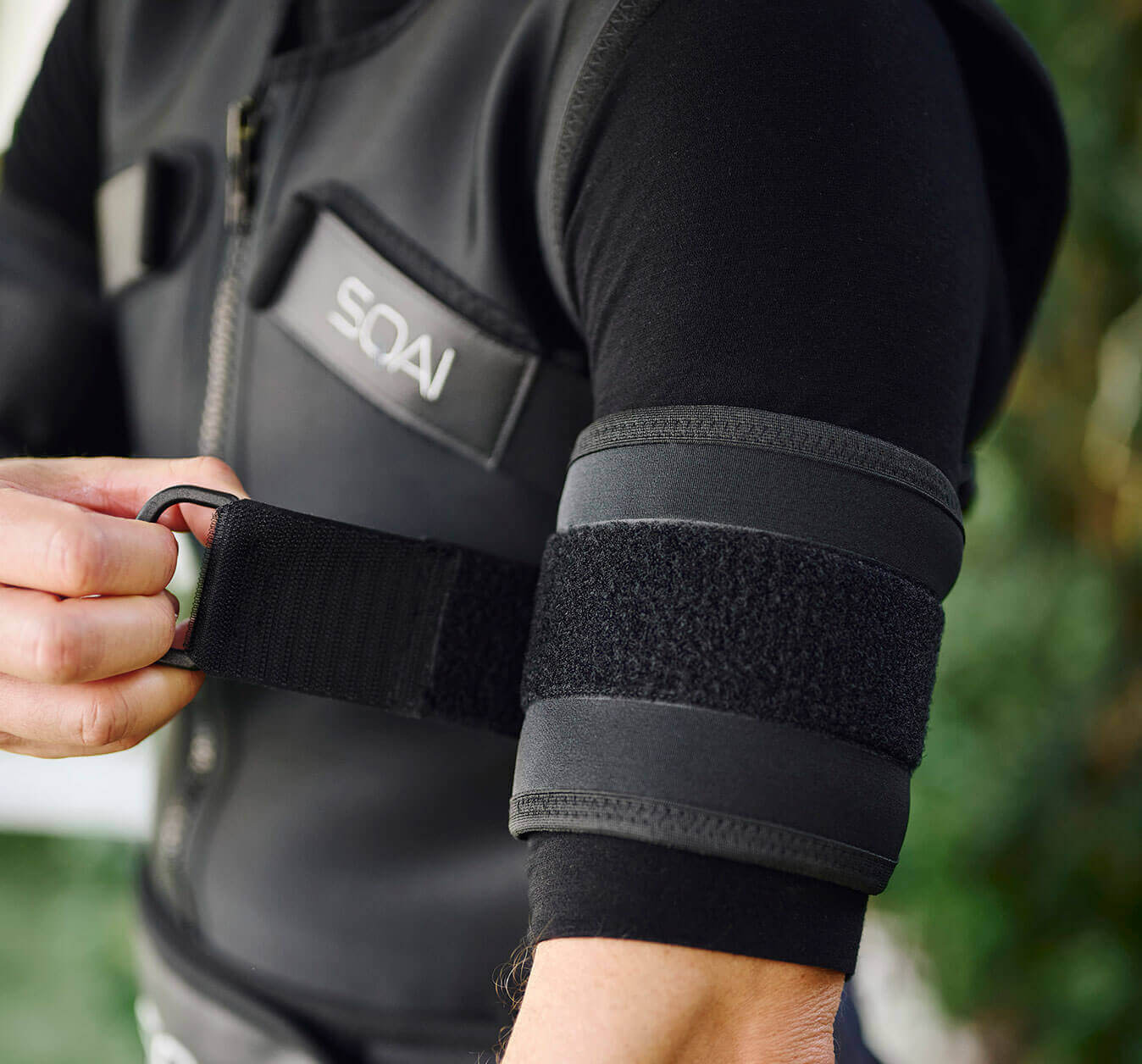Chronic pain is a widespread issue that affects millions of people worldwide, impacting their daily lives, mobility, and overall well-being. Traditional pain management approaches, such as medication, physical therapy, and lifestyle modifications, offer varying degrees of relief. However, many individuals seek alternative solutions that provide effective pain relief without the risks associated with long-term medication use. One emerging option is Electro Muscle Stimulation, or EMS, which has gained attention for its potential role in managing chronic pain.
Understanding EMS and How It Works
Electro Muscle Stimulation is a technology that uses electrical impulses to stimulate muscles. These impulses mimic the signals that the brain naturally sends to muscles during physical activity. By applying small electrical currents through electrode pads placed on the skin, EMS can induce muscle contractions, improve circulation, and influence nerve activity.
EMS works by engaging neuromuscular pathways, which can be beneficial for individuals suffering from chronic pain. It can help activate underused muscles, improve blood flow to affected areas, and even disrupt pain signals sent to the brain. This makes it a promising tool for pain relief, particularly for conditions related to muscle weakness, poor circulation, or nerve dysfunction.
How EMS Helps in Chronic Pain Management
There are several ways in which EMS may help individuals manage chronic pain. While research is still ongoing, many users and healthcare professionals report significant benefits from incorporating EMS into pain management routines.
Blocking Pain Signals
One of the key mechanisms behind EMS for pain relief is its ability to interfere with pain signals. The electrical impulses stimulate sensory nerve fibers, which can reduce the perception of pain. This is similar to the way Transcutaneous Electrical Nerve Stimulation, or TENS, works. By overriding pain signals before they reach the brain, EMS can provide temporary relief from discomfort, making it easier to perform daily activities.
Improving Blood Circulation
Chronic pain is often linked to poor circulation, which can lead to muscle stiffness, inflammation, and delayed healing. EMS helps enhance blood flow by triggering muscle contractions, which naturally promote circulation. Increased blood flow ensures that oxygen and nutrients are delivered more efficiently to affected areas, while metabolic waste products associated with inflammation and soreness are removed more effectively. This process can help reduce swelling, improve mobility, and accelerate healing in individuals with chronic pain conditions.
Reducing Muscle Tension and Spasms
Muscle tension and spasms are common contributors to chronic pain. Many people experience pain due to tight or overactive muscles, which can lead to discomfort and restricted movement. EMS can help by inducing rhythmic muscle contractions, which relax tight muscles and prevent spasms. This effect is particularly useful for individuals with conditions such as fibromyalgia, tension headaches, or musculoskeletal disorders that cause muscle stiffness and pain.
Strengthening Weak Muscles
Chronic pain can lead to muscle weakness and imbalances, often as a result of reduced physical activity or prolonged periods of inactivity. EMS helps stimulate muscle contractions even in cases where traditional exercise may not be possible or comfortable. Strengthening weak muscles through EMS can improve posture, reduce strain on joints, and provide better support to affected areas, which can help alleviate pain in the long term.

Conditions That EMS May Help With
EMS is being increasingly used as part of rehabilitation programs and pain management strategies for various chronic pain conditions. Some of the most common conditions where EMS may be beneficial include:
Lower Back Pain
Lower back pain is one of the most prevalent types of chronic pain, affecting people of all ages. Weak core muscles, poor posture, and nerve compression are often contributing factors. EMS can help strengthen the lower back and abdominal muscles, providing better spinal support and reducing pain.
Arthritis
Arthritis causes inflammation and stiffness in the joints, leading to chronic pain and reduced mobility. EMS may help by promoting joint mobility and reducing stiffness through improved circulation and muscle activation. Individuals with osteoarthritis or rheumatoid arthritis may find relief from regular EMS sessions.
Fibromyalgia
Fibromyalgia is characterized by widespread muscle pain, fatigue, and tenderness. People with this condition often experience heightened sensitivity to pain and discomfort. EMS can provide gentle stimulation to the muscles, promoting relaxation and pain relief. Some users also report improved sleep quality after EMS therapy, which is crucial for managing fibromyalgia symptoms.
Neuropathy and Nerve Pain
Nerve pain, such as that caused by diabetic neuropathy, sciatica, or post-surgical nerve damage, can be challenging to manage. EMS has shown potential in reducing nerve-related discomfort by stimulating sensory nerves and improving circulation, which may help regenerate damaged nerve fibers.
Post-Injury or Post-Surgical Pain
After an injury or surgery, patients often experience prolonged muscle weakness and discomfort. EMS can be used to accelerate recovery, prevent muscle atrophy, and enhance mobility. Many physical therapists incorporate EMS into rehabilitation programs to support patients during their recovery process.

EMS vs. TENS Therapy: Understanding the Difference
While EMS and TENS both use electrical stimulation to address pain, they serve different purposes.
EMS primarily focuses on strengthening muscles, promoting circulation, and reducing muscle spasms. It is often used in rehabilitation settings or as part of a fitness routine to maintain muscle health.
TENS, on the other hand, is designed specifically for pain relief. It works by delivering low-voltage electrical pulses to sensory nerves, blocking pain signals before they reach the brain. TENS is commonly used for conditions such as nerve pain, arthritis, and post-surgical pain relief.
For chronic pain sufferers, both EMS and TENS may be beneficial, and some devices even offer combined EMS and TENS functions for a more comprehensive approach to pain management.
How to Use EMS for Chronic Pain
If you are considering EMS as part of your pain management routine, it is important to follow a few key guidelines to ensure safety and effectiveness. Electro Muscle Stimulation (EMS) can be a powerful tool for alleviating chronic pain, but proper use is essential to maximize its benefits and avoid any complications.
Consult a Healthcare Professional
While EMS is generally safe, it is always best to seek medical advice before using it, especially if you have underlying health conditions such as heart disease, epilepsy, or a pacemaker. Consulting a healthcare professional will ensure that EMS is suitable for your specific condition and help avoid any adverse effects. They can guide you on the appropriate settings, duration, and frequency of usage based on your individual needs, as well as monitor your progress over time. A healthcare provider can also help tailor the EMS therapy to work in conjunction with any other treatments or medications you may be receiving, ensuring that your overall pain management plan is as effective as possible.
Use the Right Intensity and Frequency
Different EMS devices offer various intensity levels and modes, which allows you to tailor the treatment to your specific pain needs. It is recommended to start with a low-intensity setting and gradually increase it based on comfort and effectiveness. This gradual approach helps avoid overstimulation, which could lead to muscle discomfort or skin irritation. Most users find that consistent usage, typically several sessions a week, yields the best results, with each session lasting around 20 to 30 minutes. Regularity and patience are important, as it may take several sessions before you begin to notice significant improvements. It’s also helpful to track your progress over time to see how your body is responding and adjust accordingly.
Proper Electrode Placement
Placing the electrode pads in the correct locations is crucial for achieving optimal pain relief. For lower back pain, the pads should be positioned on either side of the spine in the affected area to help relax tight muscles and alleviate discomfort. For arthritis, the electrodes should be placed around the joint, targeting the surrounding muscles to provide better support and reduce inflammation. Correct placement ensures that the electrical impulses are delivered to the areas that need treatment most, improving circulation and reducing pain signals. Be sure to follow the instructions provided with your EMS device to ensure proper electrode placement, as incorrect positioning can lead to suboptimal results.
Combine EMS with Other Therapies
While EMS can be effective on its own, it works best when combined with other pain management strategies such as physical therapy, stretching, low-impact exercise, and proper nutrition. EMS can help accelerate the healing process by stimulating muscles and improving circulation, but it should not be relied on exclusively. Physical therapy can help strengthen muscles, while stretching and low-impact exercises improve flexibility and mobility. Proper nutrition, especially anti-inflammatory foods, can also enhance recovery and reduce overall pain levels. By incorporating EMS into a broader pain management plan, you are more likely to experience long-term relief and improved quality of life.

Monitor Your Progress and Adjust as Needed
As you incorporate EMS into your chronic pain management routine, it is important to monitor your progress regularly to assess how well it is working. Keep track of your pain levels before and after each session, noting any changes in pain intensity, muscle tightness, or mobility. Over time, this data can help you and your healthcare provider make informed decisions about the effectiveness of the treatment. If you notice that the intensity, duration, or frequency of your sessions is not yielding the desired results, it may be necessary to adjust your approach. Regular reassessment ensures that you’re optimizing your EMS therapy for maximum benefit and can prevent overuse or potential adverse effects.
Know When to Stop or Seek Help
Although EMS is generally a safe therapy, it is essential to listen to your body and stop using it if you experience any discomfort, pain, or adverse reactions. If you notice symptoms such as skin irritation, muscle soreness beyond the usual, or any other unusual sensations, it is important to pause your sessions and consult a healthcare provider. In some cases, adjusting the intensity or placement of the electrodes can alleviate issues, but a medical professional should assess if the therapy is still appropriate for your condition. Additionally, if you experience worsening pain or a new set of symptoms, it is crucial to stop and seek professional guidance to rule out any underlying issues or complications that EMS might not be addressing.
Stay Consistent with Your EMS Routine
Consistency is one of the key factors to getting the most out of EMS therapy. Like any form of treatment, EMS requires regular use to produce long-term benefits. Whether you're using EMS for chronic pain relief, muscle rehabilitation, or any other therapeutic purpose, sticking to a consistent schedule helps to retrain muscles and maintain pain management results. Skipping sessions or using EMS sporadically can reduce the effectiveness of the treatment, as muscles and tissues may not receive the continuous stimulation needed for optimal recovery. It’s important to set a routine that fits into your lifestyle, such as using EMS three to four times a week, and make it a part of your daily or weekly routine to see noticeable improvements over time.

Be Aware of Potential Side Effects
While EMS therapy is generally safe when used correctly, it is important to be aware of any potential side effects. Some individuals may experience mild skin irritation at the site of the electrode pads, especially if they have sensitive skin. In some cases, the muscle contractions may feel uncomfortable or even cause temporary soreness, similar to a mild workout. These side effects are typically temporary and should subside shortly after the session ends. However, if these effects persist or worsen, it’s important to reduce the intensity, adjust electrode placement, or take a break from the sessions to allow your skin and muscles to recover. Always follow the manufacturer's instructions for electrode placement, skin preparation, and device usage to minimize these risks.
Use EMS as Part of a Holistic Approach to Pain Management
EMS can be a powerful component of a broader pain management strategy, but it works best when used in combination with other holistic methods. In addition to physical therapy and exercise, you may want to explore complementary treatments such as mindfulness meditation, yoga, acupuncture, or even cognitive behavioural therapy (CBT) to help manage chronic pain. By adopting a comprehensive approach that includes both physical and mental strategies, you can improve your overall quality of life and better cope with the challenges that come with chronic pain. Combining EMS with relaxation techniques or other therapies may also help in reducing stress, which is often a contributing factor to pain.
The Growing Role of EMS in Chronic Pain Management
Electro Muscle Stimulation is proving to be a valuable tool in chronic pain management, offering a drug-free, non-invasive way to relieve discomfort, improve circulation, and strengthen muscles. Whether used for lower back pain, arthritis, nerve pain, or post-injury recovery, EMS provides an effective option for those seeking long-term relief.
As research continues, EMS is expected to become an increasingly important part of pain management strategies. For individuals struggling with chronic pain, it may offer a safe and accessible solution that enhances mobility, reduces discomfort, and improves overall quality of life.

